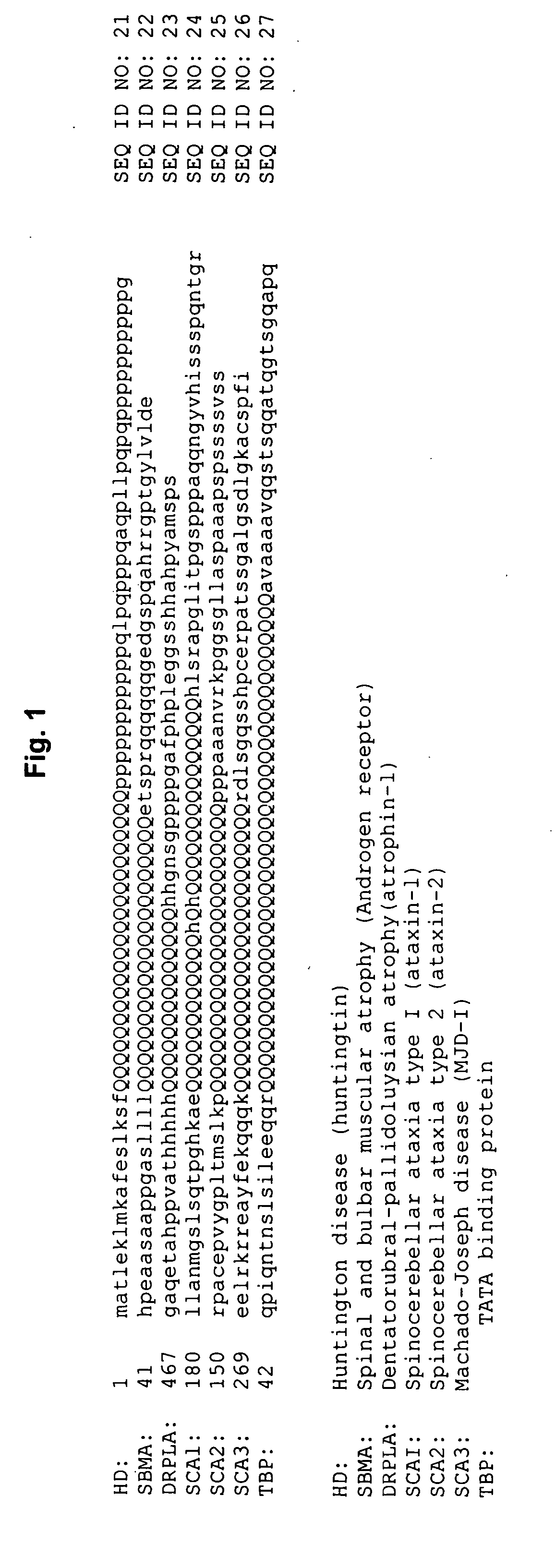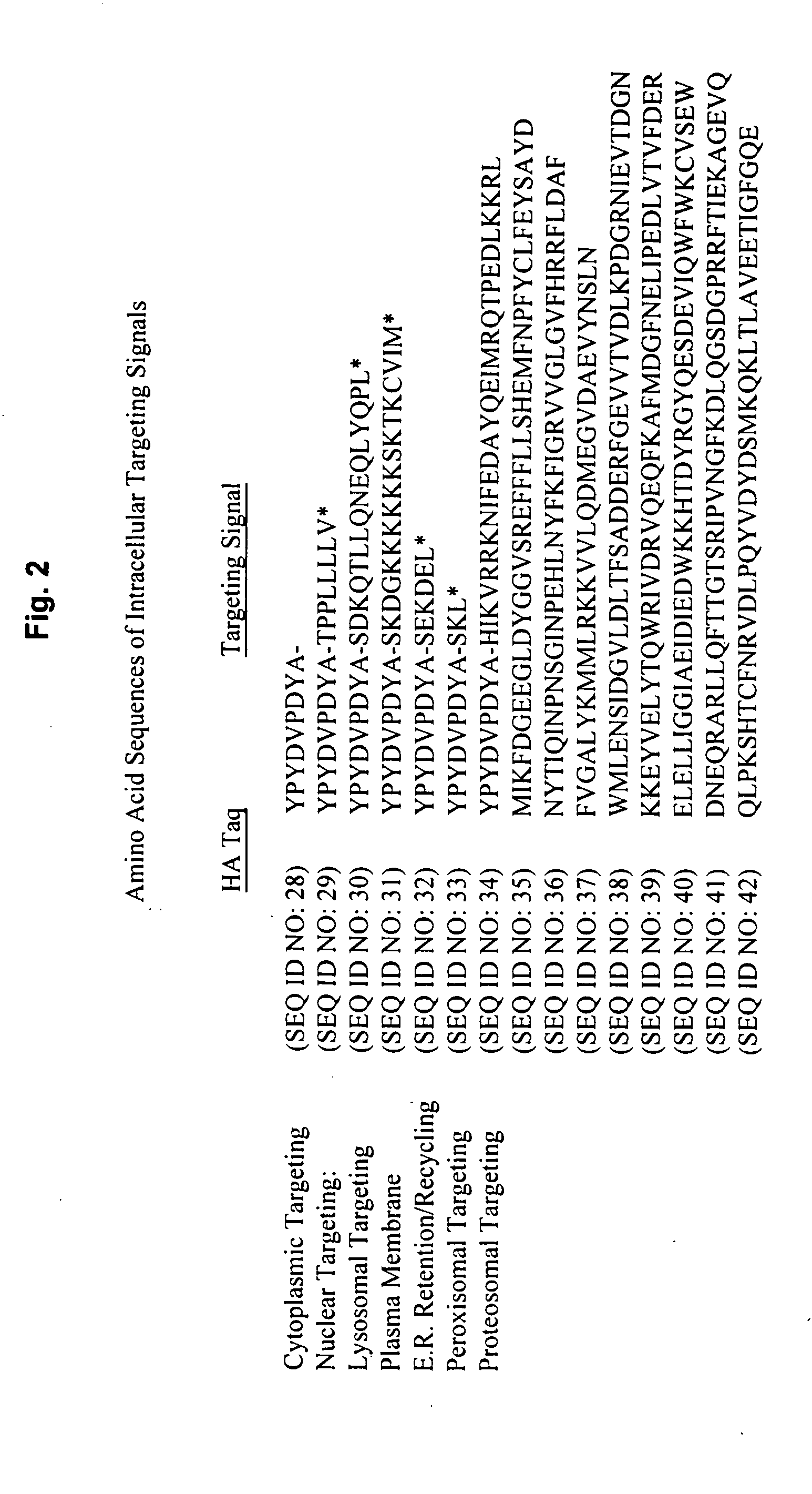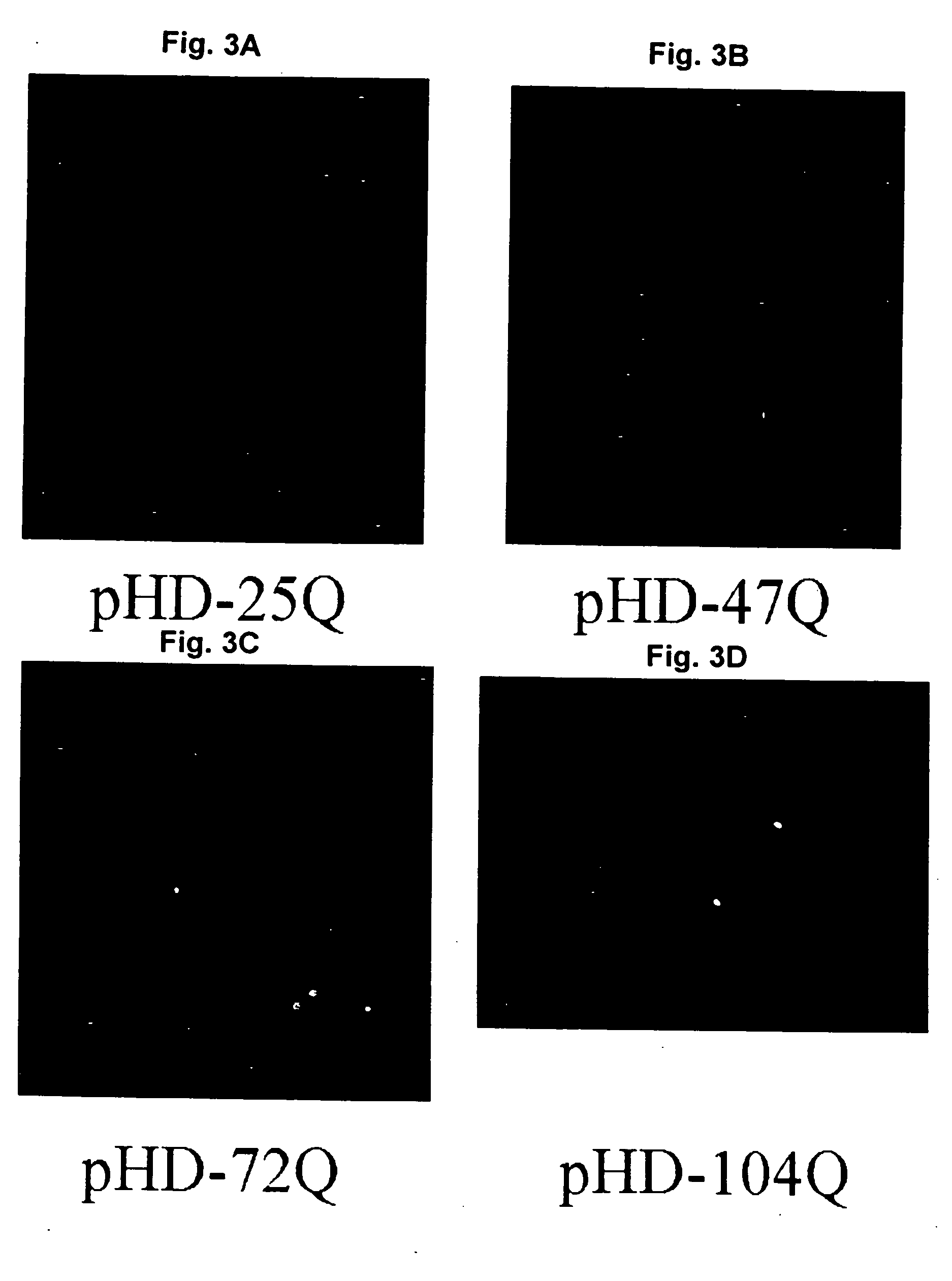Methods and compositions for inhibiting polypeptide accumulation associated with neurological disorders
a neurological disorder and polypeptide technology, applied in the direction of peptide sources, antibody medical ingredients, metabolic disorders, etc., can solve the problems of no treatment available to postpone the onset of illness or substantially slow the progress of the disease, memory loss and ultimately death, and mental deterioration and eventually death
- Summary
- Abstract
- Description
- Claims
- Application Information
AI Technical Summary
Benefits of technology
Problems solved by technology
Method used
Image
Examples
example 1
Methods for Assaying the Effects of Intracellular Polypeptide Aggregation
[0198] In this example, methods for assaying intracellular polypeptide aggregation and a demonstration of intracellular polypeptide aggregation leading to cell death is provided.
[0199] In order to determine the effects of intracellular polypeptide aggregation, cells expressing a polypeptide representing normal huntingtin polypeptide as compared to cells expressing a huntingtin polypeptide representing the polypeptide found in patients with Huntington's disease was examined. Primate cells (COS-7) were transfected with plasmid constructs encoding a model huntingtin-GFP fusion polypeptide representing the normal polypeptide or an altered huntingtin polypeptide associated with disease having 47, 72, or 104 glutamine residues. Within 24 h of transfection, a large number of the cells express the huntingtin polypeptide as indicated by the GFP tag fused to each of the test proteins. Observations were recorded at thre...
example 2
Methods for Engineering and Selecting Intrabodies with Binding Specificity to a Neuronal Polypeptide
[0202] In this example, methods for identifying and selecting an intrabody with affinity for a selected polypeptide are presented.
[0203] In order to generate an intrabody capable of inhibiting the formation of an intracellular polypeptide aggregate comprising the huntingtin polypeptide, a biotinylated peptide corresponding to the 17 N-terminal amino acid residues of huntingtin (Nt-HD) was generated as an antigen to capture phage displaying sFv molecules specific to this sequence. Briefly, a human sFv-phage display library containing 109 different clones, was incubated with biotinylated Nt-HD using a peptide synthesized at the Protein Core Facility, Tufts University (Boston, Mass.). Streptavidin-coated magnetic beads were then added and the streptavidin complexed with associated sFv-phage antibodies were isolated and washed. Bound sFv-phage were eluted with acid, neutralized, and res...
example 3
Methods for Inhibiting Polypeptide Aggregation in Mammalian Cells Expressing a Pathological Huntingtin Polypeptide
[0210] In this example, methods for inhibiting the formation of aggregates and retargeting intracellular polypeptides in mammalian cells are presented.
[0211] In order to demonstrate the ability of an intrabody to specifically bind an intracellular polypeptide and inhibit polypeptide aggregation, mammalian cells (COS-7) were cotransfected with a first plasmid encoding a model huntingtin polypeptide fused to GFP and a second plasmid encoding an intrabody that specifically binds to the model huntingtin polypeptide. The assay is designed such that both the target antigen, i.e., the model huntingtin polypeptide, and the intrabody can be visualized. In particular, the huntingtin polypeptide is visualized by detecting fluorescence emitted by the GFP domain of the huntingtin-GFP fusion polypeptide and the intrabodies tested are visualized using a rhodamine-conjugated antibody ...
PUM
 Login to View More
Login to View More Abstract
Description
Claims
Application Information
 Login to View More
Login to View More - R&D
- Intellectual Property
- Life Sciences
- Materials
- Tech Scout
- Unparalleled Data Quality
- Higher Quality Content
- 60% Fewer Hallucinations
Browse by: Latest US Patents, China's latest patents, Technical Efficacy Thesaurus, Application Domain, Technology Topic, Popular Technical Reports.
© 2025 PatSnap. All rights reserved.Legal|Privacy policy|Modern Slavery Act Transparency Statement|Sitemap|About US| Contact US: help@patsnap.com



